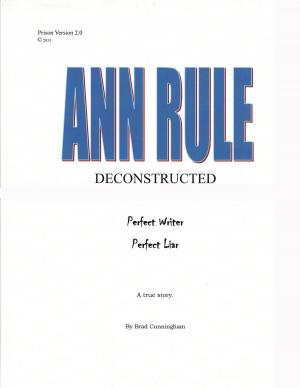How to Get Rid of Your Unwanted Debt
A Litigation Attorney Representing Homeowners, Credit Card Holders & Others
Nonfiction, Health & Well Being, Self Help, Self Improvement, Success| Author: | Carl E. Person | ISBN: | 9781483548258 |
| Publisher: | BookBaby | Publication: | January 1, 2010 |
| Imprint: | Language: | English |
| Author: | Carl E. Person |
| ISBN: | 9781483548258 |
| Publisher: | BookBaby |
| Publication: | January 1, 2010 |
| Imprint: | |
| Language: | English |
When a national economy takes a substantial downturn, manageable debt becomes unmanageable and unwanted. The author, a commercial litigation attorney, graduate of Harvard Law School, explains how debtors can get rid of (or substantially reduce) four types of unwanted debt: (1) residential mortgages; (2) credit card debt; (3) student loans (when bankruptcy is not available); and (4) IRS debt (usually for unpaid income or withholding taxes). The author provides forms for pro se use or, more appropriately, for use by the debtor's attorney, making it less costly for the debtor to obtain professional help anywhere in the United States. The forms are an important part of the e-booklet. The litigation forms for mortgagor-debtors include an answer with affirmative defenses and counterclaims for use in judicial-foreclosures states (where the bank seeks a judgment of foreclosure and sale) and a complaint for a quiet title action, for use in non-judicial foreclosure states (where the mortgagee - through the trustee and deed of trust - sells the mortgaged property without any or any significant oversight by the local courts. All forms, it should be noted, are a starting point, and a competent lawyer would probably want to make significant changes. The litigation forms for actions brought to recover credit card debt are (1) an answer with affirmative defenses and counterclaims; (2) a request for the plaintiff to produce various documents needed to defend the action properly; and (3) a request for the plaintiff to admit certain facts (which, if the plaintiff's lawyer fails to answer on a timely basis, could result in providing you with the admitted facts to enable you to get rid of the lawsuit and unwanted debt). The litigation forms for student loans include (i) a summons and complaint against the owner of the note, the school, college or university at which the instruction took place, and the note guarantors (but not parents or relatives, of course); the form is set up for pro se use (i.e., without an attorney), but you are urged to use an attorney for best results; pro se litigation is too difficult for 99% of the population; (ii) a request for document production; (iii) a set of requests to admit facts relevant to your complaint; (iv) a notice of motion to compel the defendants to provide your requested discovery; and (v) a form of affidavit in support of your motion to compel discovery. The forms for getting rid of your IRS debt are the forms provided by the IRS. The author's main purpose in dealing with IRS debt is to encourage debtors to take advantage of the comparatively simple, low-cost and effective way of getting rid of debt owed to the IRS if you really have no means of paying off such debt. The e-booklet provides a substantial amount of useful information, insight and forms to enable debtors to reduce their unwanted debt, and they should seriously consider retaining a local attorney to help them accomplish this.
When a national economy takes a substantial downturn, manageable debt becomes unmanageable and unwanted. The author, a commercial litigation attorney, graduate of Harvard Law School, explains how debtors can get rid of (or substantially reduce) four types of unwanted debt: (1) residential mortgages; (2) credit card debt; (3) student loans (when bankruptcy is not available); and (4) IRS debt (usually for unpaid income or withholding taxes). The author provides forms for pro se use or, more appropriately, for use by the debtor's attorney, making it less costly for the debtor to obtain professional help anywhere in the United States. The forms are an important part of the e-booklet. The litigation forms for mortgagor-debtors include an answer with affirmative defenses and counterclaims for use in judicial-foreclosures states (where the bank seeks a judgment of foreclosure and sale) and a complaint for a quiet title action, for use in non-judicial foreclosure states (where the mortgagee - through the trustee and deed of trust - sells the mortgaged property without any or any significant oversight by the local courts. All forms, it should be noted, are a starting point, and a competent lawyer would probably want to make significant changes. The litigation forms for actions brought to recover credit card debt are (1) an answer with affirmative defenses and counterclaims; (2) a request for the plaintiff to produce various documents needed to defend the action properly; and (3) a request for the plaintiff to admit certain facts (which, if the plaintiff's lawyer fails to answer on a timely basis, could result in providing you with the admitted facts to enable you to get rid of the lawsuit and unwanted debt). The litigation forms for student loans include (i) a summons and complaint against the owner of the note, the school, college or university at which the instruction took place, and the note guarantors (but not parents or relatives, of course); the form is set up for pro se use (i.e., without an attorney), but you are urged to use an attorney for best results; pro se litigation is too difficult for 99% of the population; (ii) a request for document production; (iii) a set of requests to admit facts relevant to your complaint; (iv) a notice of motion to compel the defendants to provide your requested discovery; and (v) a form of affidavit in support of your motion to compel discovery. The forms for getting rid of your IRS debt are the forms provided by the IRS. The author's main purpose in dealing with IRS debt is to encourage debtors to take advantage of the comparatively simple, low-cost and effective way of getting rid of debt owed to the IRS if you really have no means of paying off such debt. The e-booklet provides a substantial amount of useful information, insight and forms to enable debtors to reduce their unwanted debt, and they should seriously consider retaining a local attorney to help them accomplish this.















